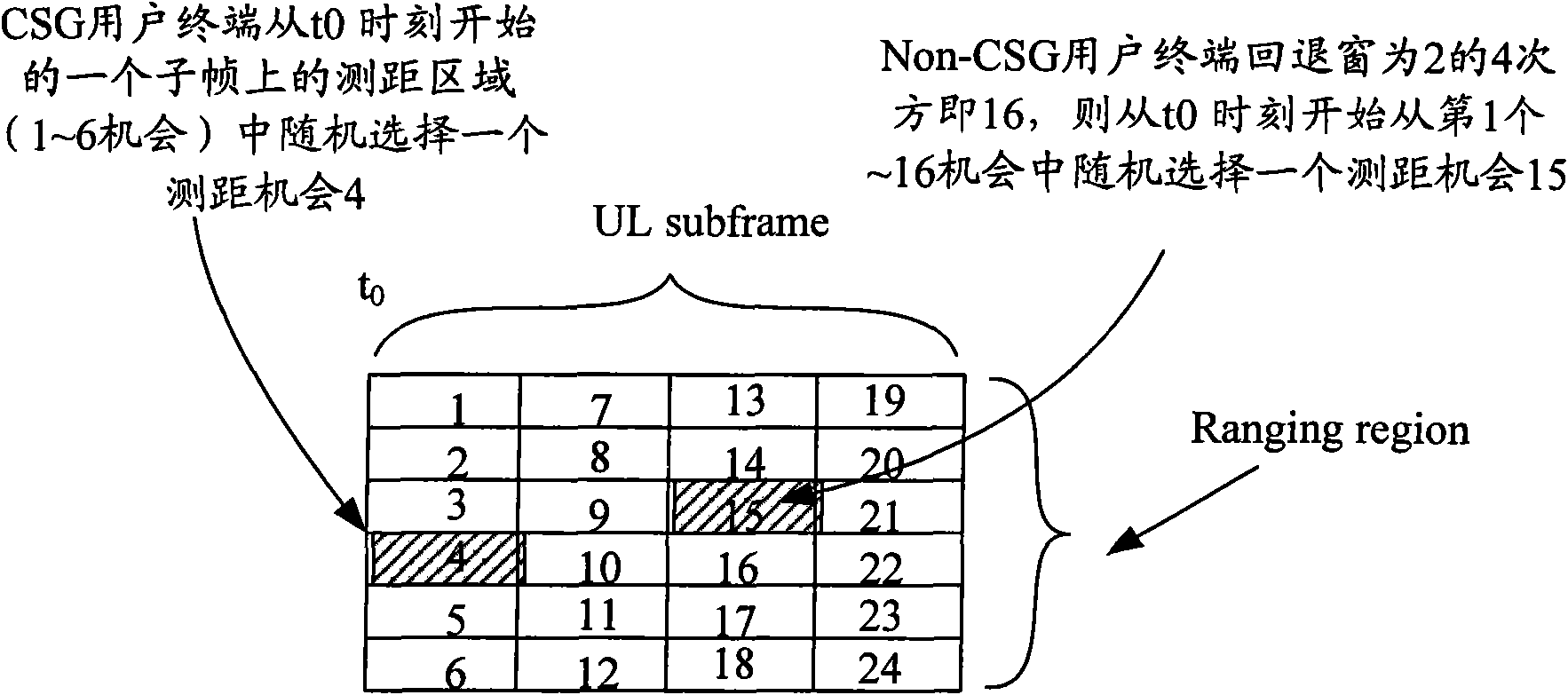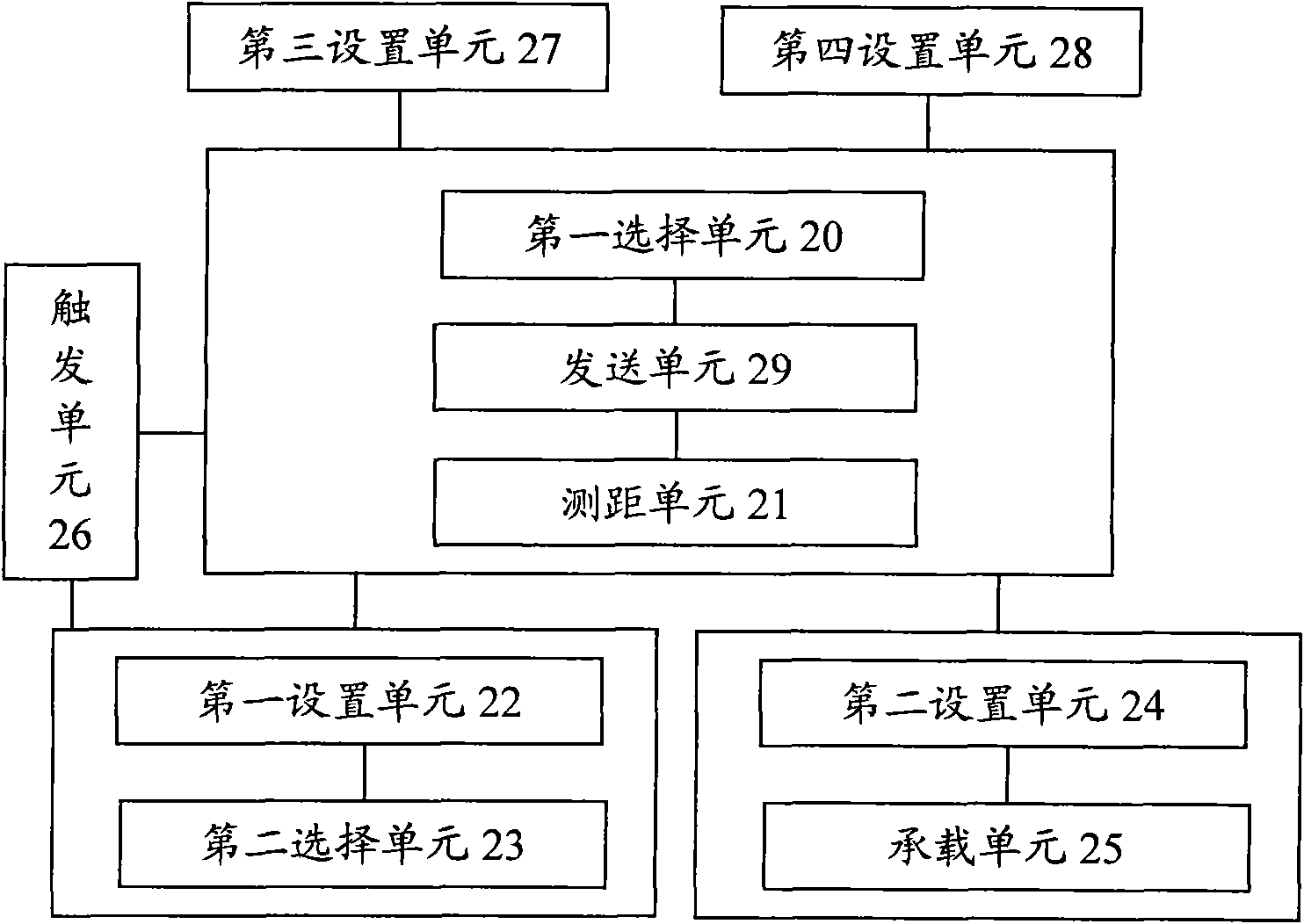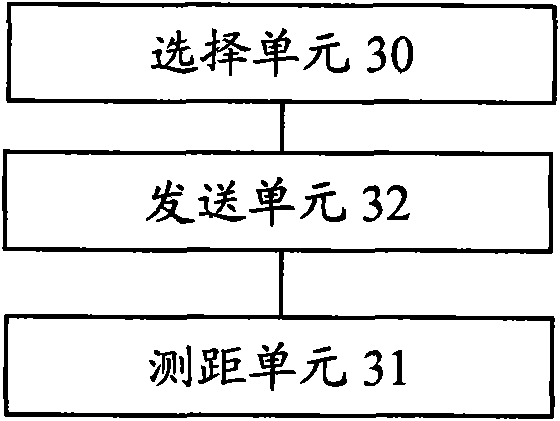Priority-based competitive ranging method and device for mobile terminals
A mobile terminal, priority technology, applied in the direction of network traffic/resource management, electrical components, wireless communication, etc., can solve the problems of not being able to guarantee the quality of service for CSG users, and not being able to differentiate user terminals.
- Summary
- Abstract
- Description
- Claims
- Application Information
AI Technical Summary
Problems solved by technology
Method used
Image
Examples
Embodiment 1
[0082] This example is applicable to ranging performed by CSG user terminals and non-CSG (non-CSG) user terminals under the CSG-Open femtocell BS.
[0083] The system configures the initial, handover, periodic, and bandwidth request ranging areas. The so-called ranging area is the time-frequency resource area selected by the user terminal when sending the ranging code, that is, the user terminal should carry the ranging code in the system subframe Area. Dedicated ranging code sets are configured for different ranging purposes. In this example, the CSG user terminal and the non-CSG user terminal share the initial ranging area and the initial ranging code set, and the CSG user terminal and the non-CSG user terminal perform initial ranging, and will randomly select the ranging code from the ranging code set, And the selected ranging code is carried in the ranging area, and the ranging code is sent to the base station side through the corresponding channel, and the base station s...
Embodiment 2
[0095] This example applies to ranging performed by CSG user terminals and non-CSG user terminals under the CSG-Open femtocell BS.
[0096] The implementation of ranging in this example is basically the same as that in Embodiment 1. The difference is that when the user receives the ranging response and the status is "Continue", the CSG user terminal adopts a random selection method on one or more subframes. A ranging opportunity is randomly selected in the ranging area, and a non-CSG user randomly selects a ranging opportunity in a periodic ranging area within a backoff window in a random backoff manner.
[0097] When no ranging response is received, if it is a CSG user terminal, the user terminal randomly selects a ranging opportunity in an initial ranging area within a backoff window in a random backoff mode; if the user is a non-CSG user, The user expands the original backoff window by a factor of 2 to the power of n (n>=1), and randomly selects a ranging opportunity in the...
Embodiment 3
[0100] This example applies to ranging performed by CSG user terminals and non-CSG user terminals under the CSG-Open femtocell BS. The implementation of ranging in this example is basically the same as that in Embodiment 1. The difference is that when the user terminal does not receive a ranging response, the CSG user terminal and the non-CSG user terminal perform the initial ranging Select a ranging opportunity within the range area.
PUM
 Login to View More
Login to View More Abstract
Description
Claims
Application Information
 Login to View More
Login to View More - R&D
- Intellectual Property
- Life Sciences
- Materials
- Tech Scout
- Unparalleled Data Quality
- Higher Quality Content
- 60% Fewer Hallucinations
Browse by: Latest US Patents, China's latest patents, Technical Efficacy Thesaurus, Application Domain, Technology Topic, Popular Technical Reports.
© 2025 PatSnap. All rights reserved.Legal|Privacy policy|Modern Slavery Act Transparency Statement|Sitemap|About US| Contact US: help@patsnap.com



